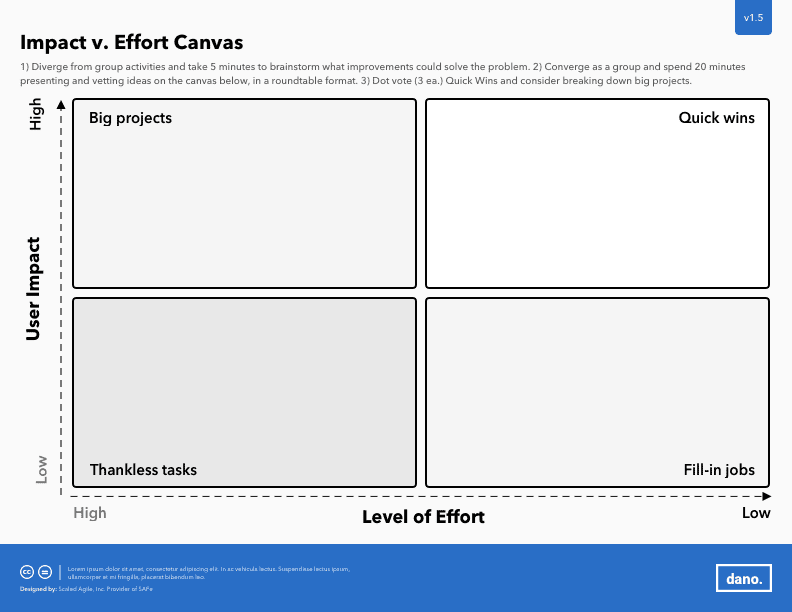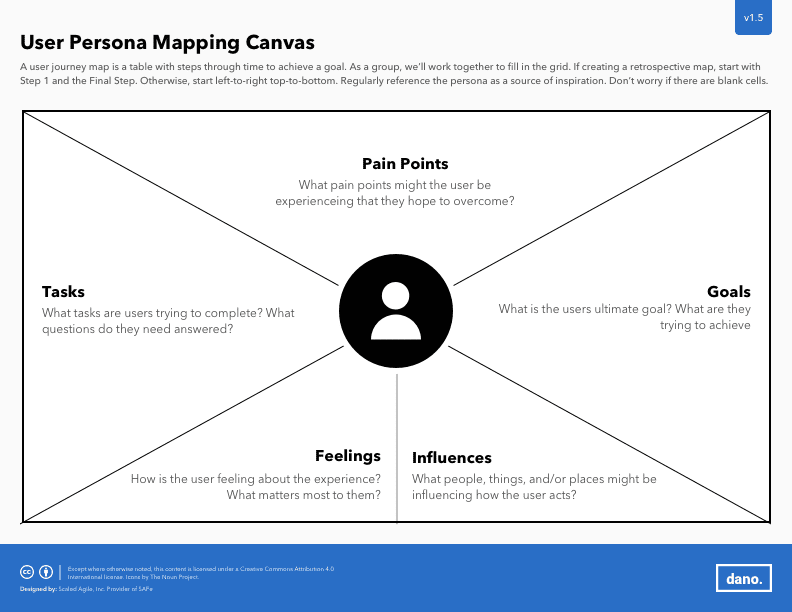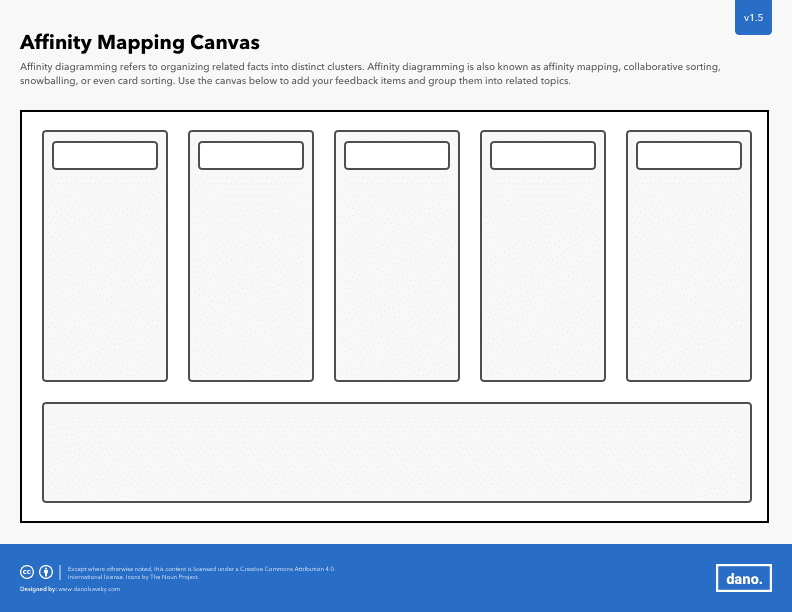Impact vs Effort Canvas
Design Thinking Toolkit Series | December 6th, 2019

An Impact versus Effort matrix is a project management tool that visually displays the potential impact of tasks or initiatives against the amount of effort required to complete them. The matrix helps prioritize tasks based on their relative impact and effort, and provides a framework for decision-making in terms of which tasks to tackle first or allocate more resources to. The matrix typically includes four quadrants: high impact/high effort, high impact/low effort, low impact/high effort, and low impact/low effort. The goal is to focus efforts on tasks with high impact and low effort.
An Impact versus Effort matrix can be used in various situations when there is a need to prioritize tasks, allocate resources effectively, and make informed decisions based on a clear understanding of the potential impact and effort involved. Some specific scenarios where an impact versus effort matrix can be useful include:
- Project management: In project management, an impact versus effort matrix can be used to prioritize tasks and make informed decisions about which tasks to tackle first, based on their potential impact and the resources required.
- Resource allocation: When there is limited time and resources available, an impact versus effort matrix can be used to allocate resources to tasks that will have the greatest impact and minimize waste.
- Strategic planning: In strategic planning, an impact versus effort matrix can be used to determine which initiatives will have the greatest impact on the organization’s goals and which initiatives can be deferred or delegated.
- Problem solving: In problem solving, an impact versus effort matrix can be used to prioritize solutions based on their potential impact and the effort required to implement them.
Performing an impact versus effort exercise involves the following steps:
- Identify tasks: Gather a list of all tasks or initiatives that need to be completed for a project or a certain period of time.
- Assess impact: For each task, determine its potential impact on the overall goals of the project or the organization. This can be done through consensus or by assigning a score to each task.
- Assess effort: Evaluate the effort required to complete each task, including the time, resources, and team members needed. Again, this can be done through consensus or by assigning a score to each task.
- Plot tasks on the matrix: Plot each task on the matrix based on its impact and effort score.
- Prioritize tasks: Based on the placement of tasks on the matrix, prioritize tasks by focusing on tasks with high impact and low effort, or tasks with low impact and high effort that can be deferred or delegated.
- Review and adjust: Review the matrix periodically to ensure that tasks and their impact/effort ratings are up-to-date and adjust as necessary.
In conclusion, an impact versus effort matrix can be used in any situation where there is a need to make informed decisions about tasks, initiatives, or projects based on a clear understanding of their potential impact and the resources required. The impact versus effort matrix provides a clear visual representation of which tasks should be prioritized, and can be used as a tool for communication and alignment within a team.


